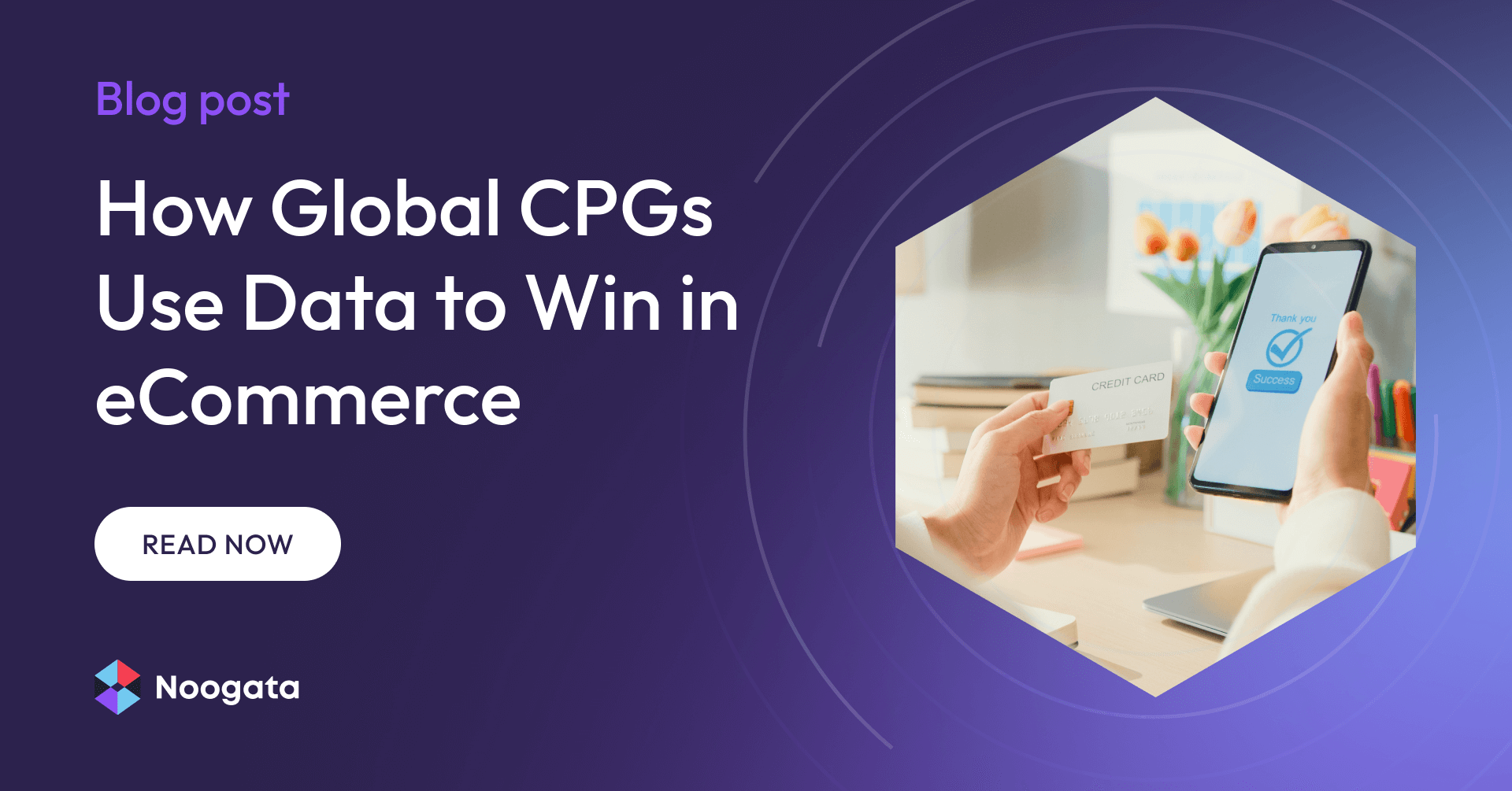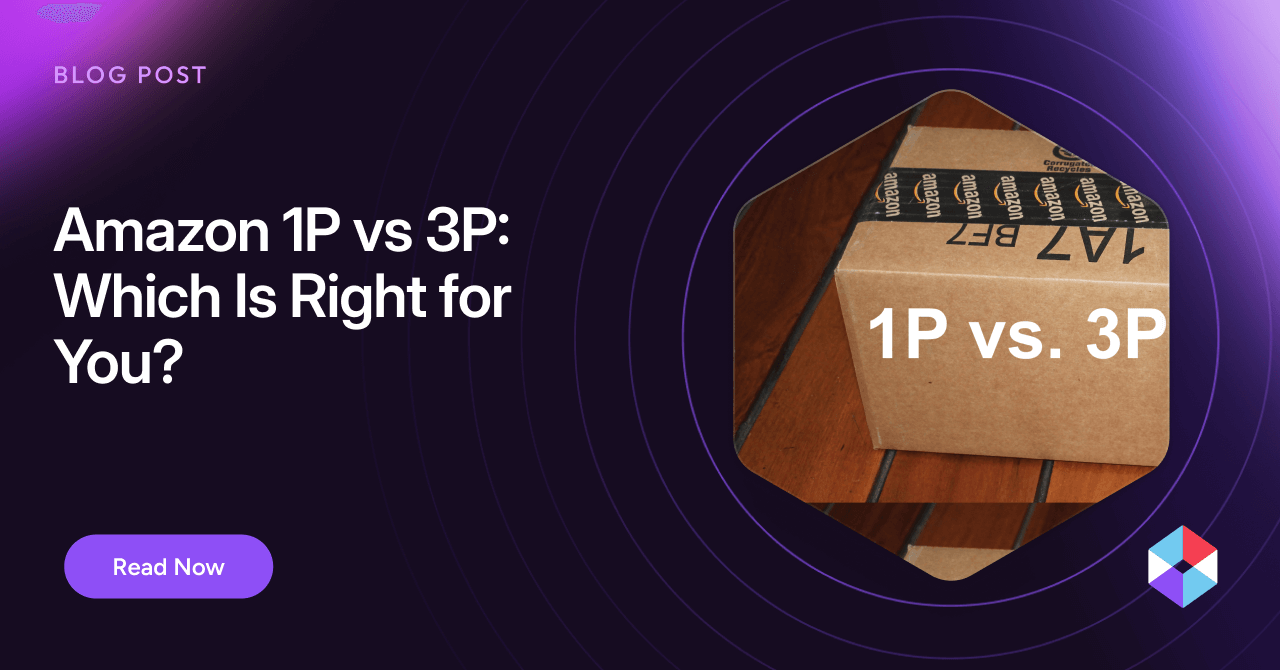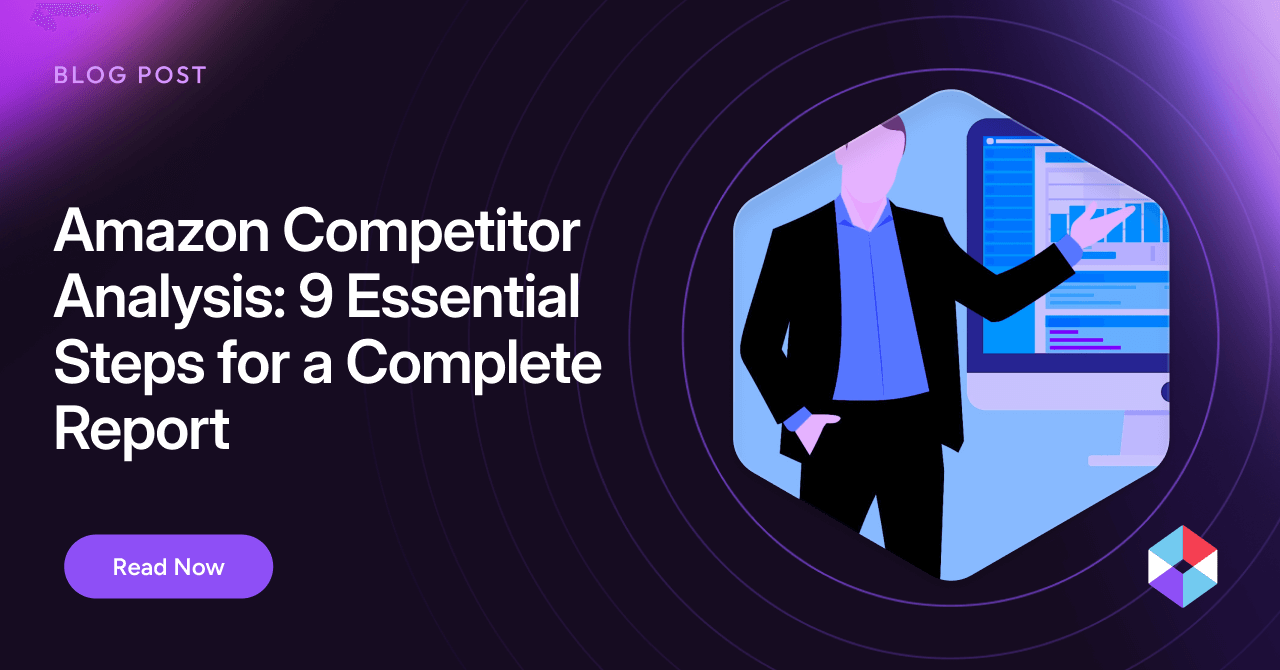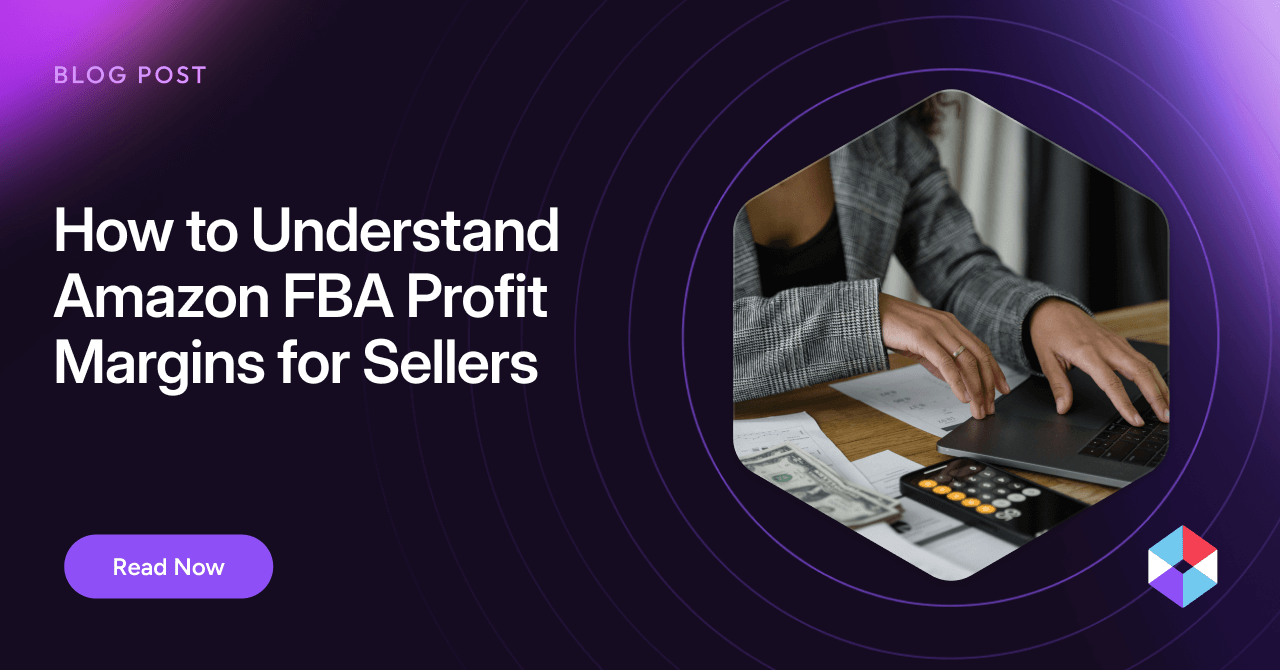The phrase “work smarter, not harder” really hits home for CPG brands. The pandemic’s aftermath and global economic disruption have left CPGs juggling supply chain issues, labor shortages, and near-term inflationary pressures. Let’s not forget that shopper behavior has changed dramatically in the last two years, with buyers swapping a trip to the store for digital experiences.
Despite all these challenges, CPG brands saw more growth in 2020 than in the four years between 2016 and 2019. Why? Because the pivot from brick-and-mortar stores to eCommerce enabled CPGs to access valuable data on granular shopper insights, competitor pricing, growth prediction, and more.
In this post, we’ll look at why eCommerce is here to stay for CPGs, why data is essential in this industry, and how CPGs successfully use data to get ahead of their competitors—and win eCommerce.
Why do CPGs need eCommerce?
You might not recognize the term Consumer Packaged Goods (CPG), but you’ll definitely be familiar with the products it represents. Consumer packaged goods are everyday items sold and replaced quickly, such as milk, toothpaste, and soft drinks.
The global CPG industry has benefited from the digital revolution in ways other sectors could only dream about. Over 50% of shoppers said they’d ordered products online during the pandemic that they’d usually buy in-store, and eCommerce will make up 27% of all retail sales by 2026. This shift from in-person shopping to digital sales provides CPGs with new ways to deliver their on-demand products to consumers, and they’re choosing eCommerce models, including:
- Partnerships with online retailers and platforms like Amazon
- Direct-to-consumer channels
- Creating their own online channels, such as websites and mobile apps
As customer expectations increase about product availability, distribution speed, and choice, CPGs can harness eCommerce to provide shoppers with the options to order online, pick up at the store, or deliver to their door. Widespread ownership of mobile devices means that CPGs are always within shoppers’ reach—and shoppers are always within the brands’ reach too.
How do CPGs win?
Every data point tells a story. Winning CPGs can piece together enormous volumes of data to uncover the whole picture, which tells them a detailed, exciting tale about their brands, customers, competitors, and more.
In contrast, the traditional brick-and-mortar retail environment is fraught with logistical, economic, and demand turbulence. Successful global CPGs do not avoid this business model entirely. Instead, they diversify by adopting a digital presence that accommodates different shopper preferences, directly connects them with consumers, and ensures flexible growth.
Why are data analytics so important to CPGs?
Mobile device adoption means that online shopping is more popular and accessible than ever, with 70% of customers saying they’ve changed the way they shop since the pandemic. Winning CPGs use this opportunity to access vital data analytics under the hood. They’re employing modern digital channels to collect and analyze large datasets to help them better understand customers and the market, adopt data-driven decisions, and discover new customer segments.
64% of CPGs increased investment and strategic focus in digital transformation in 2021, with Sigmoid predicting that data analytics spending will reach 25% of CPGs’ total technology and IT expenses in 2023. It’s not surprising, considering data points provide CPGs with valuable insights into trends, competitive activity, stock replenishment needs, and more.
What data is used by CPGs to win in eCommerce?
The data collected by winning global CPGs can be split into two categories. The best brands analyze both:
1. Product-based data
- Product sales
- Sales trends and analysis
- Price analytics
2. Customer behavior data
- Purchase history
- Customer loyalty and retention
- Cart and order abandonment
- Demographics and customer segments
Some data intelligence platforms, such as Noogata, enable CPGs to extract insights at a much more granular level, providing an advantage. These analytics include:
- Price Benchmarking – Competitor pricing changes due to inflation, business strategy, and promotions. With Noogata, CPGs can analyze competitor pricing data in real-time to react accordingly.
- Perfect Content – CPGs know what catches your shoppers’ attention in-store. Noogata helps you translate the visibility of product content to your digital shelf by generating targeted keyword recommendations.
- Digital Shelf – Keep your digital shelves stocked by using Noogata to monitor and track changes to your product listings.
- Search Trendspotting – Remain one step ahead of the curve by harnessing Noogata’s competitive trendspotting analytics, which uncovers all relevant and upcoming search terms for your products.
How Global CPGs Use Data to Win in eCommerce
Collecting data is the first step, but knowing how to apply this data to real-world use cases will put CPGs ahead of the competition. Here’s how successful global CPGs are getting ahead.
1. Personalization
Personalization campaigns drive up to 15% higher conversion rates and 20% higher customer satisfaction rates than generalized content. There are a few ways that CPGs can create tailored content for shoppers, including using purchase history data to provide a ‘bestsellers’ or product recommendations page. This great upselling strategy is highly relevant to shoppers’ interests. You could also use purchase history data to help customers ‘buy again’ with a few clicks, so their favorite and most-purchased products are readily available to individual shoppers on your site.
2. Customer Segmentation
Your customers are likely diverse, with a wide range of needs and preferences. Just because they all like your product(s) doesn’t mean they’re alike! Data can help CPGs understand customers’ demographics, behavioral characteristics, buying habits, and more. It’s possible to dig deeper and uncover customer details such as age and income, meaning that the right data can give CPGs visibility over their shoppers’ specific demands.
One of the most significant benefits of customer segmentation is for CPG marketing teams. Using this data, they can trigger pop-up offers, smart recommendations, and offers to the relevant and interested segments. Customer segmentation data can also help CPGs break into new markets and target different verticals. The data allows brands to truly understand and target the shoppers behind the screen based on their purchasing habits.
3. Supply Chain Optimization
Does anyone remember The Great Toilet Paper Shortage of 2020? What became an internet meme was actually a vital learning curve for CPGs. Demand volatility rose dramatically by 70% between 2013 and 2019, even before the pandemic, leaving many CPGs completely unprepared for the unforeseen.
Even now that the dust has almost cleared, only 13% of CPGs clearly view overall procurement and logistics spending in real-time. Combining macro trend data (like credit card transactions) with trade data (such as stock levels) gives CPGs the much-needed visibility to forecast future demand, streamline their supply chain, and adjust production and inventory levels accordingly.
4. Pricing Strategy
Shoppers rarely want to pay more for products, especially not in the middle of a cost-of-living crisis and economic turbulence. Competitive price analysis in the CPG industry can increase profit margins by up to 23%, and advanced data collection is the best way to ensure brands (and shoppers) get more bang for their buck. Data analysis gives CPGs more insight into competitor pricing and customer behavior when they’re faced with different prices, which in turn helps CPG brands set their product pricing.
5. Product Development
As McKinsey notes, modern CPGs aim to strike a balance between “designing the thing right” and “designing the right thing.” 40% of CPGs don’t communicate with end users during product development stages, but with data analytics, they don’t need to.
Data-driven decision-making has become the backbone of successful CPGs. Customer buying, behavior, and retention metrics are just a few data points that give brands a crucial insight into what shoppers like, dislike, and want to see more of in their products. Data like this helps brands avoid common mistakes like failing to focus on the customer and putting profit before the product itself.
6. Omnichannel
From groceries to games and essential goods, Amazon is the undisputed king of online shopping. 29% of winning CPGs partner with this retail giant, but some brands are broadening their horizons and taking an omnichannel approach. McKinsey points out that half of CPG winners plan to increase investment in multichannel category specialists like Diapers.com, compared to only 7% of other CPGs.
Many successful CPGs are turning their focus to multichannel grocery, drug, and general retailers like Walmart.com and Shopify, which benefit shoppers and brands alike. As well as providing a convenient and quick way for shoppers to access their favorite products, pure-play multichannel retailers are experts at data collection. Winning CPGs obtained and analyzed 100% of data from multichannel retailers, compared to only 53% of others.
Go for Gold with Enhanced Data Analytics Capabilities
The pandemic era encouraged many retail customers to shop digitally, including those who had never experienced online shopping. This behavior has only increased eCommerce’s popularity and separated digital-focused winning CPGs from the rest of the pack.
Data analytics is by far the most significant growth opportunity for eCommerce. While data is readily available to all CPGs who adopt eCommerce strategies, only the best can unravel their data to reveal winning competitive insights.
Noogata delivers the exact competitive insights that business intelligence teams can use to increase visibility and boost performance. Noogata’s powerful AI and ML models monitor the web for competitive eCommerce data and dig deep to provide forecasts and recommendations that solve key eCommerce challenges.
Request a demo today to get started with Noogata—because winning eCommerce isn’t everything, it’s the only thing.








